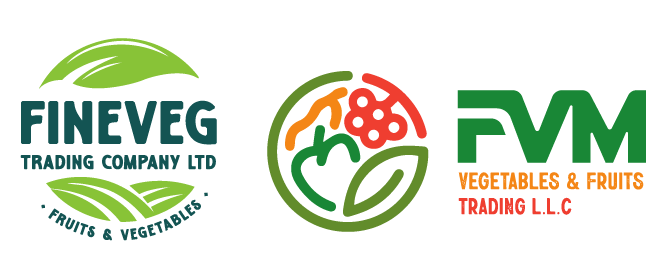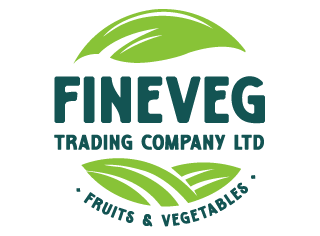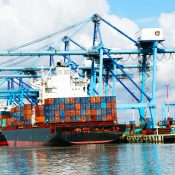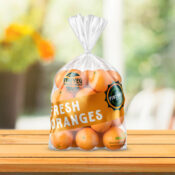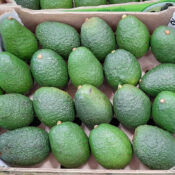
Adapting to Shifting Consumer Demands and Habits in the Fruits & Vegetables Shipping Business Across East Africa, the Middle East, and Europe
The modern consumer’s dinner plate is a powerful economic driver. What people choose to eat in London, Dubai, or Paris directly influences farming practices in Kenya, supply chain investments in Ethiopia, and the very rhythm of global trade. This shift is no longer a subtle trend; it's a seismic event reshaping the entire fruits and vegetables shipping industry. For businesses operating within the vital trade corridor connecting East Africa to the Middle East and Europe, adapting to these new consumer demands isn't just about growth—it's about survival.
This article explores the key consumer trends impacting this route and outlines the strategic adaptations required for success in today's dynamic fresh produce logistics landscape.
The Vibrant Trade Corridor: East Africa, the Middle East & Europe
The trade relationship between East Africa, the Middle East, and Europe forms a "golden triangle" for fresh produce. East African nations like Kenya, Ethiopia, and Tanzania are blessed with fertile soil and favorable climates, allowing them to act as the region's breadbasket (or, more accurately, its fruit and vegetable basket).
-
East Africa Produce Exports: This region is a powerhouse for high-value horticultural products, including avocados, French beans, passion fruit, mangoes, and cut flowers.
-
Middle East Fresh Produce Market: This market has a voracious appetite for high-quality, fresh imports. Proximity and strong trade ties make it a primary destination for East African goods.
-
Europe Fresh Fruit Imports: As a mature market, Europe demands consistent quality, certified products (like organic and Fair Trade), and a diverse range of exotic and off-season produce, which East Africa is perfectly positioned to supply.
The efficiency of perishable goods transportation is the critical link that makes this entire ecosystem function.
Key Drivers: What Today's Consumer Really Wants
Understanding the "why" behind shifting habits is the first step toward effective adaptation. Modern consumers are driven by a complex mix of values and priorities that directly influence their purchasing decisions.
1. The Health and Wellness Revolution
Consumers are increasingly viewing food as medicine. This has led to a surge in demand for "superfoods" rich in nutrients, vitamins, and antioxidants. East African exports like avocados, kale, and berries are benefiting immensely from this trend.
2. The Rise of the Conscious Consumer
Sustainability is no longer a niche concern. Shoppers are actively questioning the environmental footprint of their food. This includes:
-
Eco-friendly packaging: A strong preference for reduced plastic and recyclable or compostable materials.
-
Ethical sourcing: A desire for products certified as Fair Trade or sourced from farms with responsible labor practices.
-
Low carbon footprint: An emerging awareness of "food miles," which puts pressure on logistics providers to optimize routes and modes of transport.
3. The Quest for Convenience
Busy lifestyles in Europe and the Middle East have fueled demand for convenience. This translates to a need for pre-packaged, pre-washed, and ready-to-eat fresh produce, which requires specialized processing and packaging at the source.
4. The Demand for Organic and Certified Produce
The call for organic, pesticide-free produce is growing louder. Meeting the stringent certification standards of the Europe fresh fruit imports market (like EU Organic) is a significant challenge but offers a premium price point for compliant exporters.
5. A Year-Round Appetite
Thanks to globalized supply chains, consumers now expect to find their favorite fruits and vegetables on shelves year-round. This erases traditional seasonality and places immense pressure on logistics providers to ensure a consistent and reliable supply from different growing regions.
Meeting the Challenge: Overcoming Logistical Hurdles
Catering to these new consumer demand trends presents significant challenges for the fruits and vegetables shipping sector.
-
Complex Cold Chain Management: Transporting highly perishable goods like berries or leafy greens requires an unbroken, precisely monitored cold chain. Any temperature deviation can result in spoilage and catastrophic financial loss.
-
Fluctuating and Unpredictable Demand: Trends can emerge rapidly. A fruit that becomes a social media sensation can see a sudden spike in demand, making forecasting and capacity planning incredibly difficult.
-
Last-Mile Delivery Pressures: The expectation for freshness means delivery windows are shrinking. This puts immense pressure on the "last mile" of the logistics chain to be faster and more efficient than ever.
-
Regulatory and Compliance Burden: Each destination market has its own set of phytosanitary regulations, labeling laws, and import duties. Navigating this complex web of compliance for perishable goods transportation requires deep expertise.
Strategies for Success: How to Adapt and Thrive
Companies that proactively adapt their fresh produce logistics models will capture the market. The key is to build a supply chain that is agile, transparent, and resilient.
-
Embrace Digital Transformation: Technology is the ultimate enabler. Implementing IoT sensors for real-time temperature and humidity tracking, using AI for demand forecasting, and leveraging blockchain for farm-to-fork traceability builds trust and efficiency.
-
Optimize the Supply Chain: This involves everything from improving post-harvest handling techniques at the farm level to optimizing packing processes to reduce waste and enhance product protection.
-
Diversify Markets and Products: Don't rely on a single product or market. Savvy exporters are exploring new destinations within the Middle East and Eastern Europe while also diversifying their product offerings to hedge against market volatility.
-
Invest in Sustainable Packaging: Proactively shifting to eco-friendly packaging solutions is no longer optional. It meets consumer demand, often reduces weight (lowering freight costs), and positions your brand as a forward-thinking leader.
-
Balance Air vs. Sea Freight: While air freight offers speed, it comes at a high cost and carbon footprint. Advances in refrigerated container technology ("reefers") are making sea freight a more viable option for less perishable items. A strategic, hybrid approach is often the most effective solution.
Case Studies in Adaptation
-
The East African Avocado Boom: Kenyan and Ethiopian avocado exports to Europe have skyrocketed. Successful shippers achieved this by investing heavily in cold storage facilities at the source and mastering the complex logistics of ripening programs to deliver ready-to-eat avocados to European supermarkets.
-
Meeting European Organic Standards: A growing number of East African farms have undergone the rigorous process of EU organic certification. Logistics partners have been crucial, ensuring strict segregation from non-organic produce and maintaining a fully compliant, auditable trail.
-
High-Value Dates for the Middle East: The Middle East fresh produce market has a specific demand for premium dates, especially around religious holidays. Shippers have adapted by offering specialized, climate-controlled air freight solutions to ensure these high-value, delicate fruits arrive in perfect condition.
The Future is Fresh, Fast, and Flexible
The global appetite for fresh, healthy, and sustainably sourced food will only continue to grow. For businesses involved in fruits and vegetables shipping between East Africa, the Middle East, and Europe, the message is clear: the past is not a prologue. Success will belong to those who listen to the consumer, invest in technology, embrace sustainability, and build a logistics network defined by its agility and resilience.
Internal Linking Suggestions:
-
Anchor text "Complex Cold Chain Management" could link to a blog post titled: "The Ultimate Guide to Cold Chain Technology in Perishable Logistics."
-
Anchor text "Regulatory and Compliance Burden" could link to a page on: "Navigating Export Compliance for Fresh Produce to Europe and the Middle East."
-
Anchor text "Balance Air vs. Sea Freight" could link to an article: "Air vs. Sea: Choosing the Right Freight Mode for Your Perishable Goods."
Ready to optimize your fresh produce supply chain?
The challenges are complex, but the opportunities are immense. If you're looking for a logistics partner that understands the nuances of the East Africa-Middle East-Europe trade corridor, contact our team of fresh produce logistics experts today. Let us help you build a supply chain that delivers freshness, quality, and value every time.
All Categories
Recent Posts
+254 721 245 626
info@finevegtrading.com
